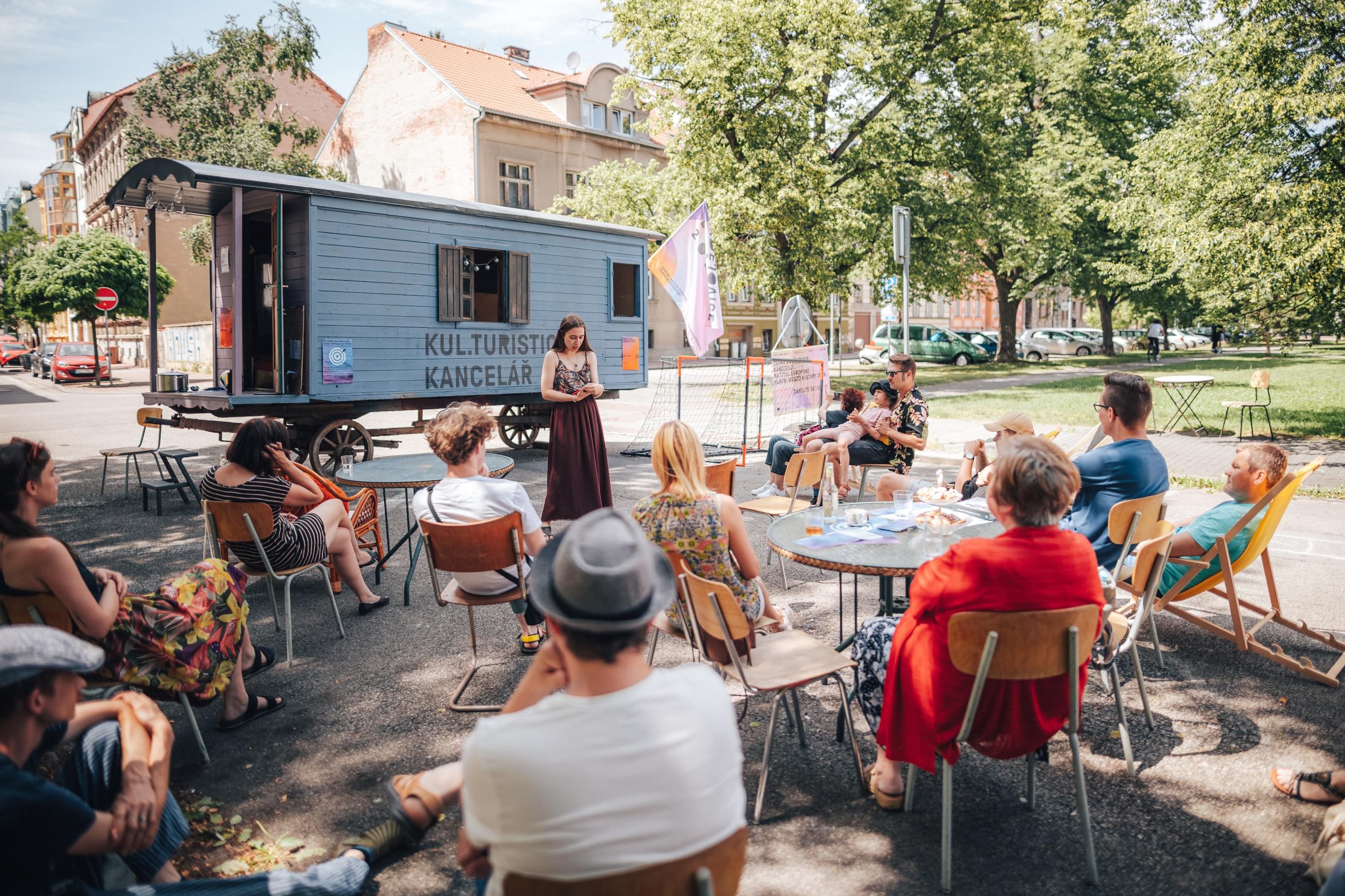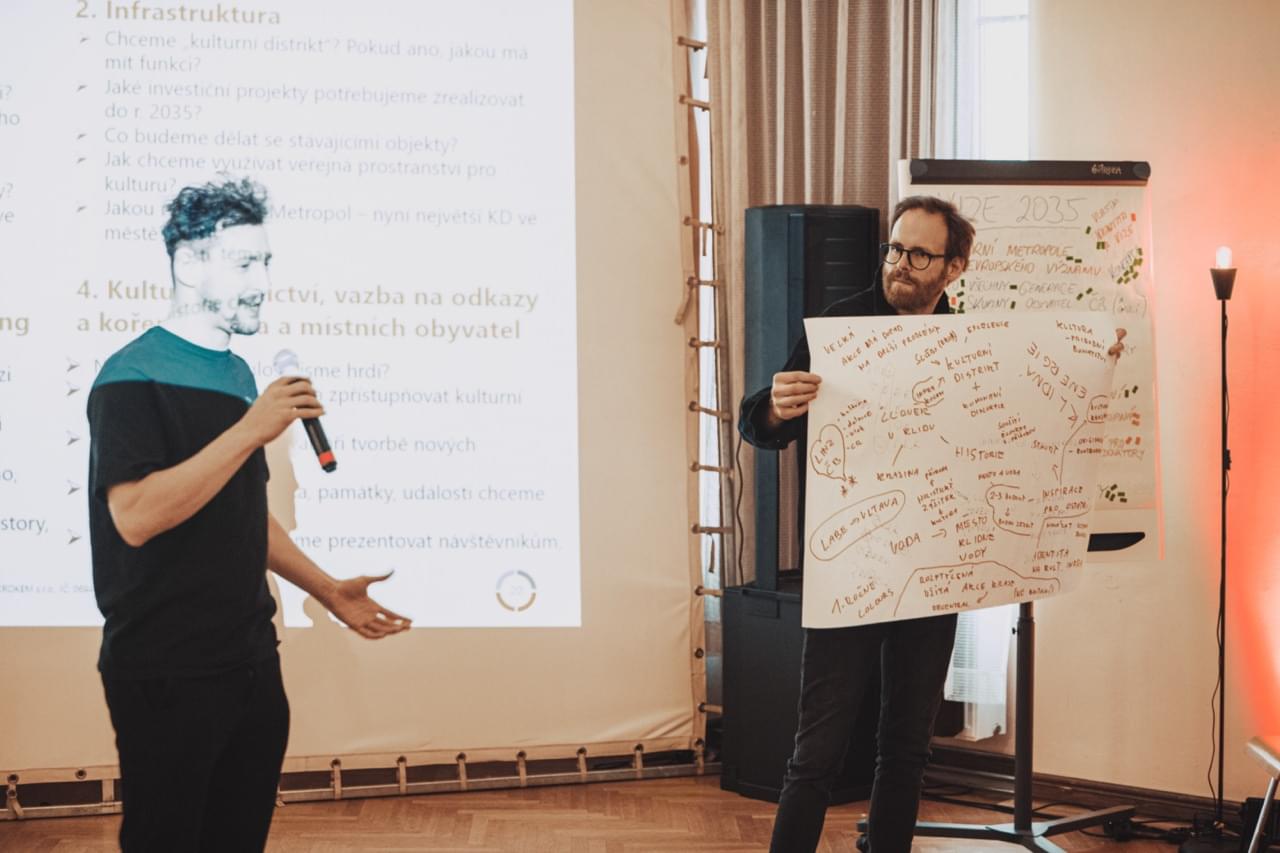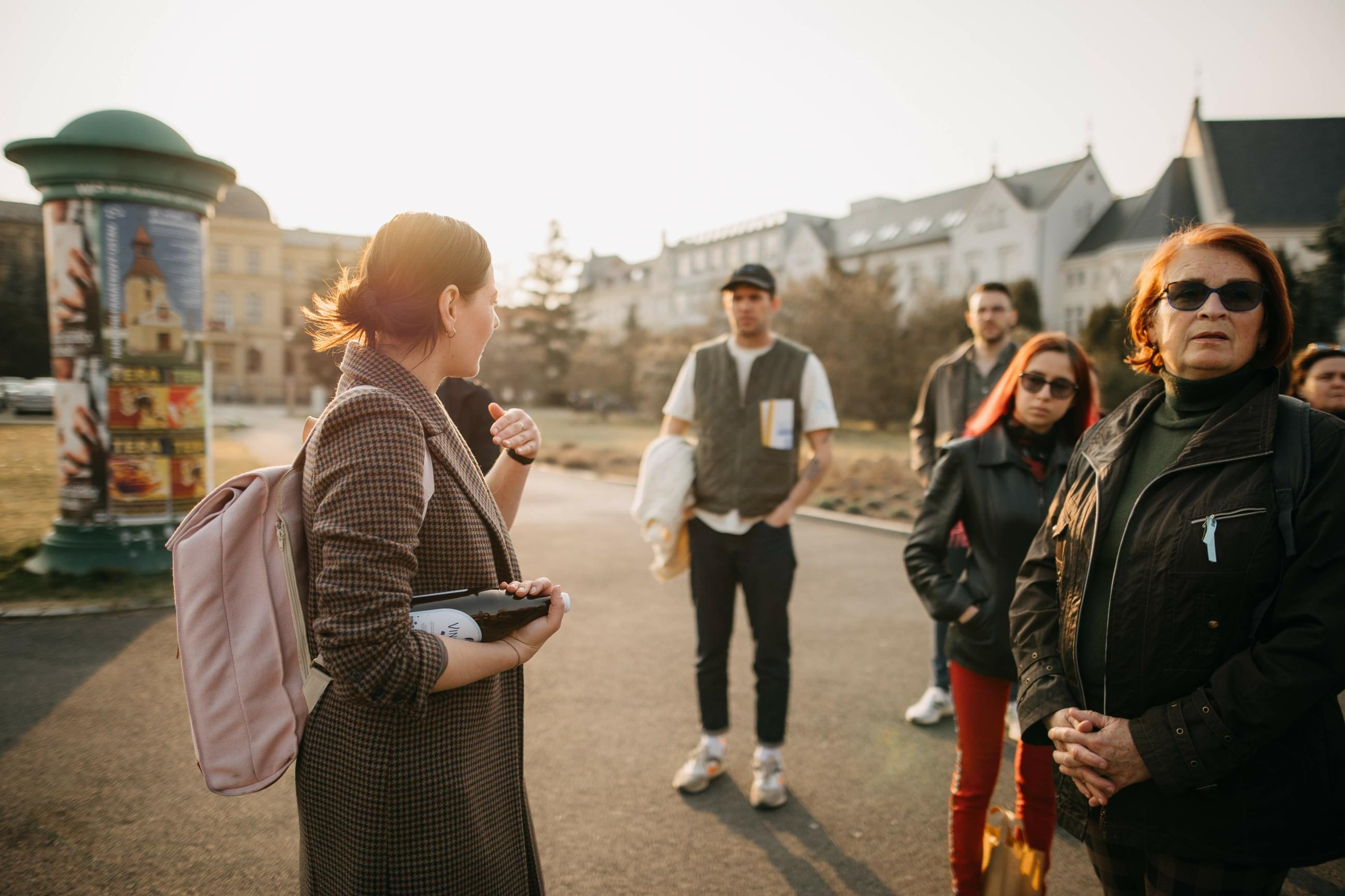Kul.turista will be back. What news is he bringing?
Right at the beginning of our work on the application for the European Capital of Culture (ECoC) competition, we began to realize that we locals are used to going to the centre of Budweis for culture. Our wish was to start exploiting the potential of all districts. We all create culture. That is why Kul.turista was created in the first round of the ECoC competition. Kul.turista parked its caravan - a cultural tourist office - in different districts seven times. We set out with him to discover the culture of our own city. What has Kul.turiststa done? What changes are we seeing in the city? And what's next for Kul.turista? We talk about all that with Lucie Boušková - the main coordinator of Kul.turista.
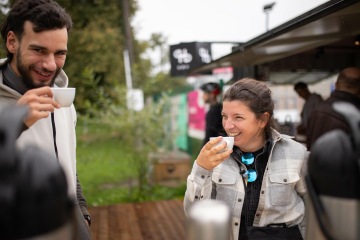
For the second time, Kul.turista sets out on his pilgrimage through the city. Before we start presenting this year's programme, let's go back to the beginning. How did Kul.turista come about?
At the beginning of the whole project was an extensive research among the residents of Budweis. From the collected research data it turned out that we locals are used to going to the city centre for culture. For understandable reasons - the infrastructure of the city, the lack of support for cultural events by associations and residents... At the same time, cultural and neighbourhood activities are a natural link to get things going in the neighbourhoods.
We wanted to show that culture is wherever people are. That other neighbourhoods outside the centre don't have to be just a place where their residents come back from work every day or pass through on their way to the shops. Our desire was to create a space that would allow organizations, communities, and individual residents to connect. To rid the culture of the label of exclusivity of the city centre. At the same time, it was important to us that what should happen in the neighbourhoods should be largely local.
We believed that the moment neighbours started to meet each other and take an interest in the public space, they would be better able to live in those places. They will have a stronger relationship with their home and be happier.
This is definitely a process for several years. What was the biggest challenge in starting this transformation?
I feel like we naturally started from the very beginning - building neighborhood communities. At the same time, I would say that was one of the most difficult moments of the whole process. I've lived in Budweis my whole life, so I knew exactly what kind of environment we were going into with Kul.turista. I was afraid that there would be a general disinterest. In Budweis, people take care of their fences, gardens, or front doors, but they usually don't care much about what's going on around them and in their neighborhood. This fear turned out to be a big mistake over time and I am glad for that.
So what was the reaction to Kul.turista?
In almost all the neighbourhoods I met with absolute enthusiasm and support. I found out that there are active people here, they are interested in public space and want to be part of it. All it took was a nudge. Someone to show them the possibilities, to encourage them, to give them space and, most importantly, not to put pressure on them. The moment they start to meet each other and use the public space, they find that they themselves can do something about it. That they themselves have the mandate to change things as they need to. The whole process is many years long, but we know that and we are patient.
Do you remember the very first meeting of neighbors in preparation for Kul.turista?
We approached territorial groups, active individuals, active associations. Then we invited all of them to one meeting and together we started to create the program. The first meeting was in Havlinda. That's kind of our big pioneer. There were times when I felt a chill running down my spine because of how much these people wanted to do something together. How capable they were of everything and how they missed some action in the public space.
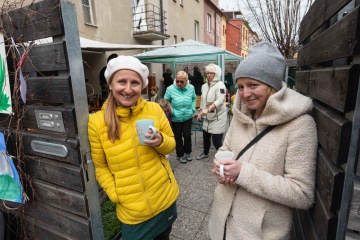
Could you name a reason?
I would say that the most common reason for wanting change and activity is children. Parents often lack safe public spaces in their neighborhoods where they can spend time together. There are a lot of young families in the Havlinda neighborhood mentioned just now who are thinking a lot about this issue. That's where our whole Kul.turista thing got off the ground pretty quickly and it all went well. The neighborhood community that developed there has been working independently of us ever since. Another place with similar enthusiasm was Lučnák and Rožnov.
What has Kul.turista already done?
We have had a total of seven Kul.turistas (small neighbourhood festivals), each of which lasted four days. There are always several layers to a Kul.tourista. The first one is the program organized by the locals in that place (neighborhood festivals, sit-down meals, activities for families with children). Another big task was also to inform about the participation of České Budějovice in the ECoC competition. The caravan, which became the centre of our cultural and tourist office, served us well for this purpose.
We did sociological research in all the districts, which was conducted by the Socionaut association. We asked people what culture means to them, what they expect from it, what importance it has for them and what obstacles are associated with it. We also asked them about their neighbourhood - what they like about their neighbourhood, what they miss, what bothers them. Everything they shared with us was carefully recorded and printed in the application form (Bid Book), which was the basis for the second round of the competition. In the second round, we would like to take the results of these surveys back to the neighborhoods - to public areas, bulletin boards, libraries. If these needs are described, residents can more easily respond to them.
We put together a program based on the needs of the neighborhoods. Kul.tourista went after social and cultural strata that are not often thematized. Our goal was to involve everyone who wanted to.
What was the strongest Kul.turist experience for you personally?
I was moved more than once (laughs). The really powerful experiences were always when the neighborhood festivals set up a communal table in each neighborhood and neighbors gathered there. Local grandmothers would sit there, show old photos of their neighborhoods and tell stories. Younger people who had moved into a particular neighborhood began to look around and began to see those places in a whole new way. That was very nice. And the nicest part is that in some places people continue to meet independently of the Kul.tourist events.
Let's move on, the entire Kul.turista programme took place within the first round of the ECoC competition. Budějovice is now in the finals. What's happening now?
Me and my team are planning a second Kul.turista. Our starting situation is very different. We have collected suggestions from all the neighbourhoods of the city. We know what people are missing. We've been able to start individual communities planning their events now. With all this, our roles are changing. We will be more of a support throughout the Kul.tourists process in planning neighborhood events. It is their job this time, their agenda and activities.
But that's not all from our end...
It's not. In addition to giving them support in these planned activities, we also have something for others. We wanted to make it easier in the future for anyone who wants to enter the public space with an activity. At the moment it's a process that is perceived as opaque, difficult to fulfil. So we decided that we wanted to describe the process step by step. We have created a manual for organizing community events in public space. Another big ambition is to simplify the process directly at the town hall. This step is defined directly in the cultural strategy of the city as an area of support. We are aiming for a comprehensive simplification of the whole system.
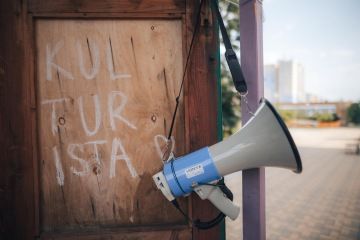
How exactly does the Kul.tourist change with the second round?
Kul.turista is growing and it is a natural development. Now it will not only be in the city, but also in the region. We have great partners within our 28 houses platform who will be hosting Kul.turista in their cities as part of our first joint project. Of course, cultural institutions, active associations and individuals are not only in Budějovice. Everybody deserves care equally - Budějovice and the whole region. Through the workshops organised within the ECC, communities and cultural institutions have the opportunity to learn how to take better care of themselves and their resources. So that they can in turn take better care of their neighbours, visitors and audiences. We want to pass on the know-how of how to be more connected to the rest of the world, how to be more self-confident, to all those who want it.
What will Kul.tourista be like from the visitor's point of view? What places will he look at?
For me, events that go more into communities and are based on the needs of the neighborhoods are important. The CAG (Czech-English Gymnasium) will "take over" the Suché Vrbné roundabout again. The next event will be in Havlinda, where the community will be closing the Blue Bridge, which they will turn into a pedestrian zone for one day. I'm really looking forward to that. And then Lučňák and Linecké suburb - again, the neighbors will take over the whole street, set up long tables and organize a neighborhood festival. It was a great success last year. And of course, a separate theme is the walks, which after last year's success cannot be missed.
Let's move over to the walks. Where shall we look?
In the first round, the walks were one of the most successful items on every Kul.turista's agenda (next to the neighbourhood festivals). Budějovice residents love them. This year we are planning a separate Procházkový festival (Walking Festival). The main theme is - relationship to the place, relationship to the city. The festival will take place in March all over the city. I'd like to invite you to the walks Seeing the City and City in Silence. Šarlota Hambergerová will lead the Invisible City Walk, which will give us an insight into how people with visual impairments perceive the city. Pavla Třísková and Lucie Novotná will guide us through the city from the perspective of a person with a hearing impairment. University teacher and curator Hynek Látal will give a walk about the sculptures in Stromovka. In the next walks we will thematize the housing estate and life in it. We will also have walks on architecture, theatre, focusing on the city through the eyes of the LGBTQI+ community and many more. We'll finish the whole Walking Festival with the passing of the cultural tourism baton, which will take us to the region for the next programme.
Kul.turista will once again travel around Budějovice, but it will also venture into the region. We have divided the region according to five ethnographic areas. Prácheňsko, Doudlebsko, Blata, Kozácko and Pošumaví. What awaits us in the region? I will talk about that with Martin Kalenský, the main coordinator of Kul.turista in the region.
